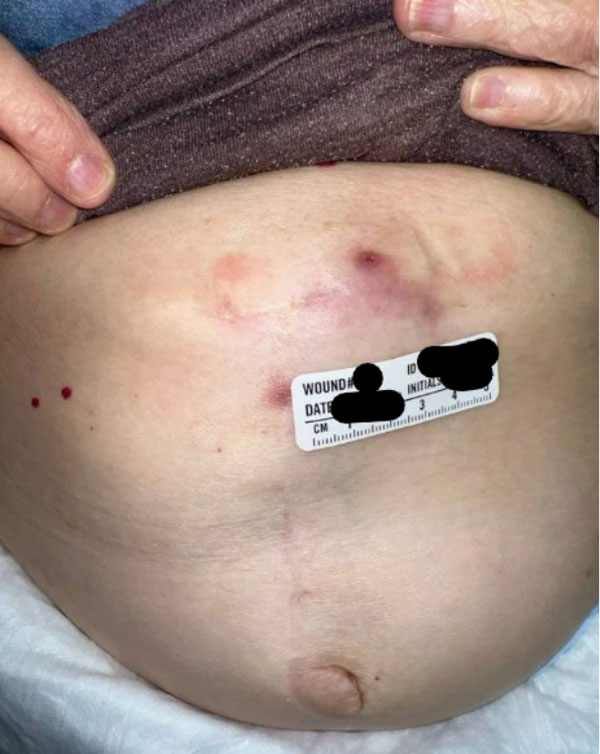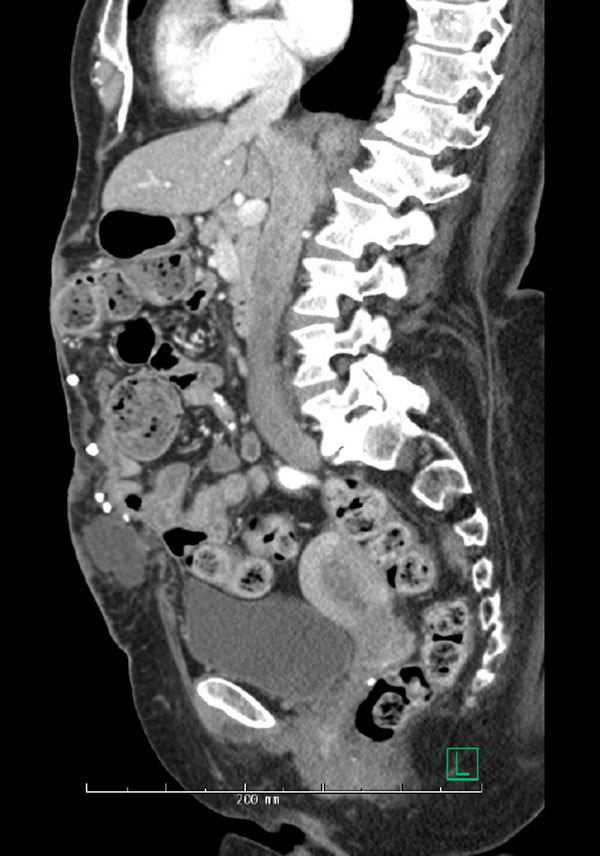History
A female patient in her 70s has a history of a multiple recurrent incisional ventral hernia. The patient has had at least seven revisional hernia surgeries. She presented with a large recurrent incisional ventral hernia that spanned the length of her midline which was widest in the M1 distribution on imaging.
She had a chronic draining wound at the superior aspect of her incision for which she had been seeing wound care and trying to care for at home. She wore an abdominal binder daily to try and keep the hernia from enlarging and to support her abdominal wall, which she felt was very heavy and disabling.



